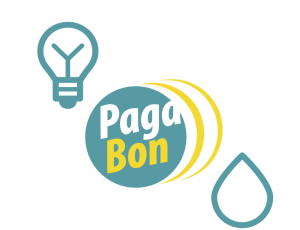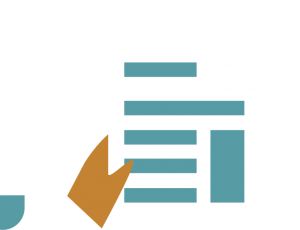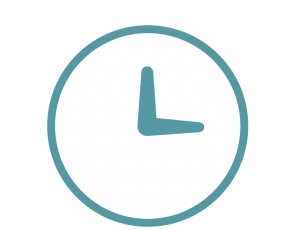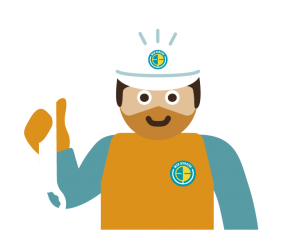Drinking water
We often take the water that runs freely from our faucets for granted. We easily forget how important water is in our daily life. Without water there is no life. On Bonaire for centuries people only had rainwater and water from natural wells at their disposal. In the 60s of the last century water scarcity occurred; there was not enough well water for the growing population. Since then drinking water on our island is extracted from seawater.
Hidden
Hidden
Sustainable production
Initially the production of drinking water from seawater was done by evaporation. This is a high-temperature distillation process: seawater is boiled until it forms vapor. On cooling of the vapor pure water is won. The residual product is warm water with a high concentration of salt. Discharges of this warm water in the sea proved to be harmful to marine life.
Reversed osmosis
Thanks to the advent of ‘reversed osmosis’ technique, the production of water on Bonaire has become far more sustainable. Reversed osmosis entails that the seawater is pressed through a membrane under high pressure. The membrane filters out all the residues from the water. Next, the water passes through a second membrane. As a result it becomes extremely pure, with a minimum amount of residual salts (5-10 mg/l).
With reversed osmosis no warm water is discharged into the sea. In addition the installation requires less space and its energy consumption is lower.
Treatment and supply
The reversed osmosis technique used by WEB for water production provides extremely pure water. This water is not yet drinking water. It needs a post treatment to comply with the legal requirements for drinking water. For example it should contain minerals, including a certain amount of calcium.
Post treatment
Via lime filters calcium carbonate is dissolved in the water. Because of this the water becomes slightly ‘harder’. For dishwasher users: the water has a total hardness of around 50 mg/l or 2.8 German Hardness degrees. With this, the water is still relatively soft; it will give little calcification.
Furthermore, CO2 is added. This acts as a catalyst for the dissolution of calcium carbonate.
On Bonaire no fluoride is added to drinking water. Fluoridation is not a legal requirement anymore in Dutch legislation since 1973.
Quality
A safe drinking water supply is important for the inhabitants and visitors of Bonaire. WEB has its own laboratory that checks the quality of the drinking water continuously.
WEB takes samples twice a week at the storage tanks at Hato and the distribution tanks at Seru Largu, Sabadeco and Subi Rincon. Spread across the island WEB has installed 34 sampling points in the water supply system. These points are sampled twice weekly on several parameters.
The WEB laboratory tests the water’s chemical composition, color, turbidity, bacteria and taste. In case of abnormalities are found in the quality, WEB takes measures and rinses a duct on the spot if necessary.
WEB regularly has consultations with the Human Environment and Transport Inspectorate (IL&T). This is a division of the Ministry of Infrastructure and Water Management. IL&T is responsible for the supervision on safe and correct drinking water management
Legionella
Legionella has WEB’s special attention in the care for safe drinking water.
Information about legionella, our approach and prevention can be downloaded here (pdf).
Partners
WEB inaugurated the new drinkwater facility on October 31st, 2021. WEB is currently in in charge of the production of 7.200 m3 per day of drinking water.
Since 2015 WEB already has its own production of 1.600 m3 per day. Thanks to a solid position WEB is able to realize the complete drinking water production independently.
In collaboration with Royal HaskoningDHV , WEB since the beginning of 2019 works on development, design and realization of a new Drink Water Treatment Plant (DWTP). In a public tender in 2020 has been chosen for an installation of IDE Technologies from Israël.
As the supplier of water, WEB is responsible for the distribution of high quality drinking water on Bonaire. WEB works closely with the Dutch water company Vitens Evides International (VEI) that shares its knowledge and expertise to optimize Bonaire’s drinking water provisions.
Projects
Drinking water is one of the basic needs of man. Bonaire’s population is growing and tourism is an important economic pillar. Investment in the drinking water supply system is a continuous process. Only in this manner WEB can guarantee a reliable water supply of appropriate quality to all consumers on our island.
Hidden
Hidden
To an independent drinking water production
Period: 2015 – present
On the 27th of October 2015 a new reversed osmosis unit has been put into operation at the DWTP at Hato. With this unit WEB produces 1,600 m3 of drinking water under its own management. This brings the total production capacity on Bonaire at 5,600 m3 per day.
The production of 4,000 m3 per day by GE-Suez will be reduced in the third quarter of 2021.
WEB then will independently start with the production of 7.200 m3 drinking water per day. The complete production line is built up modularly. This makes it possible to realize maintenance without interruption of the production.
With this WEB will have the complete drinking water production under its own management, from collection to post treatment. In this way maximum quality and supply security can be guaranteed.
New pipelines for the drinking water distribution
Period: 2014 – 2021
Due to population growth and increasing economic activity the demand for drinking water on Bonaire is rising. WEB invests in an apace sustainable growth of the water storage and transport capacity. We do this by monitoring and managing the distribution network continuously. Because of this WEB has a good view of the pipelines that need to be fixed and strengthened.
In 2014 the construction of a new pipeline started to transport more water from the DWTP at Hato to the storage tanks at Seru Largu. To guarantee more supply security,
it has been chosen to also construct a new main transportation pipeline from Seru Largu to Kaya Maria Carmen Helmund.
Pipeline Hato-Seru Largu
The new pressure pipeline to Seru Largu has a larger diameter (DN250, was DN200). In addition, frequency converters (VFD) have been installed on the electric motors of the transport pumps. These measures considerably reduce energy consumption and increase the efficiency and reliability of the drinking water supply on Bonaire.
After a public tender the construction of this pipeline, over a distance of 2 kilometer, was executed by Bonaire Wegenbouw Maatschappij (BWM).
Pipeline Seru Largu – Kaya Maria Carmen Helmund
The new main transport pipeline, with a length of 5.500 meter and a diameter of 355 mm, is made of HDPE pressure class PN 10. This pipeline guarantees the supply security and quality of the drinking water in a mayor part of the central and southern distribution network of WEB.
The work has been awarded by public tender to Curaçaose Wegenbouw Maatschappij (CWM) and has been completed in 2015.
New drinking water tank Seru Largu
Period: 2020 – 2021
It is WEB’s duty to ensure that there is sufficient drinking water supply on Bonaire. Due to population growth and increasing economic activity it is necessary to expand the storage capacity for drinking water.
On Seru Largu an extra storage tank is constructed with a capacity of 5.000 m3. Hereby WEB largely complies with the requirements.
The work has been awarded after public tender to Florida Aquastore. The construction will take place in the second quarter of 2021. In the 3rd quarter of 2021 the storage tank will be put into operation. The total storage capacity of the island with this will be 25.500 m3.
Inspection and overhaul drinking water tanks
Period: 2019 – 2024
During the course of five years WEB carries out an inspection and overhaul of all the drinking water tanks on the island. On the basis of reports in compliance with the applicable requirements every tank is assessed and evaluated. After having included in a project plan what must be done to each tank, the overhaul will be carried out.
The overhaul of the first two tanks, at the WEB-location Hato, has been carried out. In the 3rd quarter of 2021 the overhaul of the drinking water tank 1 on Seru Largu will be started.















